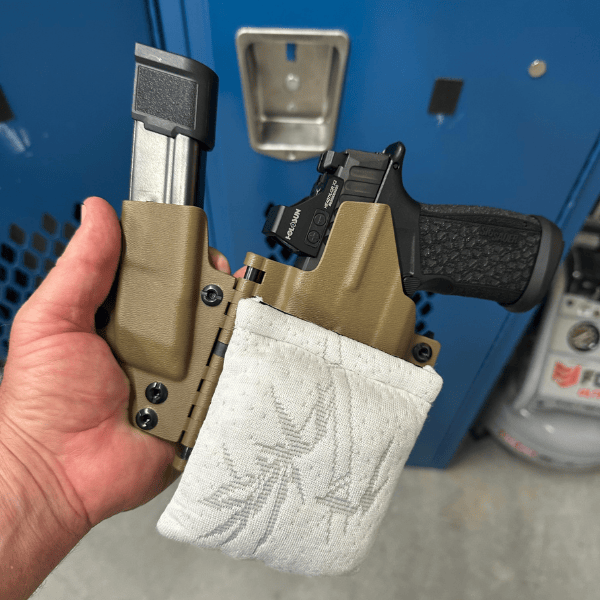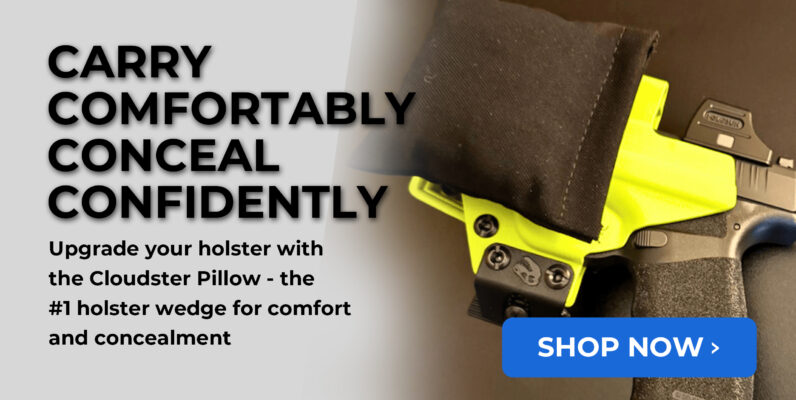Appendix Carry, AIWB, IWB Holster Wedge
How to Appendix Carry: Mastering the Appendix Carry Wedge Technique
At Cloudster Pillow, we understand the importance of comfortable and effective concealed carry. Appendix carry has gained popularity for its quick draw and concealment advantages, but it can present challenges for some users.
Enter the appendix carry wedge technique – a game-changing solution that enhances comfort and concealment. In this post, we’ll explore how to master this method and revolutionize your everyday carry experience.
What Is Appendix Carry?
Definition and Positioning
Appendix carry, also known as AIWB (Appendix Inside the Waistband), is a type of concealed carry where the firearm is carried in front of the individual’s body, typically between 12 and 2 o’clock relative to the belt buckle. This method has gained popularity among CCW practitioners due to its unique advantages.
Quick Access and Concealment
Appendix carry wedge offers rapid draw speed. The usual conclusion is that appendix carry is the fastest draw from concealment. This speed advantage proves critical in high-stress situations where every fraction of a second counts.
The firearm’s placement at the front of the body allows for easier concealment across various clothing styles. This versatility makes it an attractive option for those who need to maintain a discreet profile in different environments.
Common Challenges
Many users initially experience discomfort, especially when sitting or bending. This discomfort often stems from the firearm’s grip pressing against the abdomen or the muzzle digging into the thigh.
To address these issues, proper holster selection is essential. Kydex holsters designed specifically for appendix carry often provide better retention and a more comfortable fit. Experimenting with holster position, cant angle, and ride height can significantly improve comfort.
Safety Considerations
Safety remains paramount for appendix carry. The firearm’s proximity to vital areas requires strict adherence to proper handling techniques. Always use a high-quality holster that fully covers the trigger guard to prevent accidental discharges.
When reholstering, it’s essential to visually guide the firearm into the holster and ensure a clear path free from clothing interference. This practice, combined with regular training, helps minimize risks associated with appendix carry.
Enhancing Comfort and Concealment
To address common challenges, many CCW practitioners turn to holster wedges. Types of holster wedges include foam wedges, popular for their lightweight nature and ability to conform to body contours, and Kydex wedges, which provide durability. These accessories enhance both comfort and safety for appendix carry users. The appendix carry wedge reduces pressure points and improves concealment, making appendix carry a more viable option for a wider range of body types and lifestyles.
As we move forward, let’s explore the game-changing wedge technique that has revolutionized appendix carry for many CCW practitioners.
The Appendix Carry Wedge Technique Explained
What Is a Holster Wedge?
A holster wedge or appendix carry wedge helps tilt the grip of the gun closer to your body for better concealment and less printing. This simple tool creates a slight tilt in your firearm’s position, pushing the grip closer to your body while angling the muzzle slightly outward.
Benefits of the holster Wedge for AIWB Carry
The appendix carry wedge addresses two primary issues in appendix carry: printing and discomfort. The tilt reduces the visible outline of the gun against your clothing. It also distributes pressure more evenly, which alleviates the common problem of the muzzle digging into your thigh or groin area when sitting.
A survey conducted by a leading firearms training institute revealed that 75% of users who switched to a high-quality wedge reported reduced skin irritation. This statistic underscores the effectiveness of this simple modification.
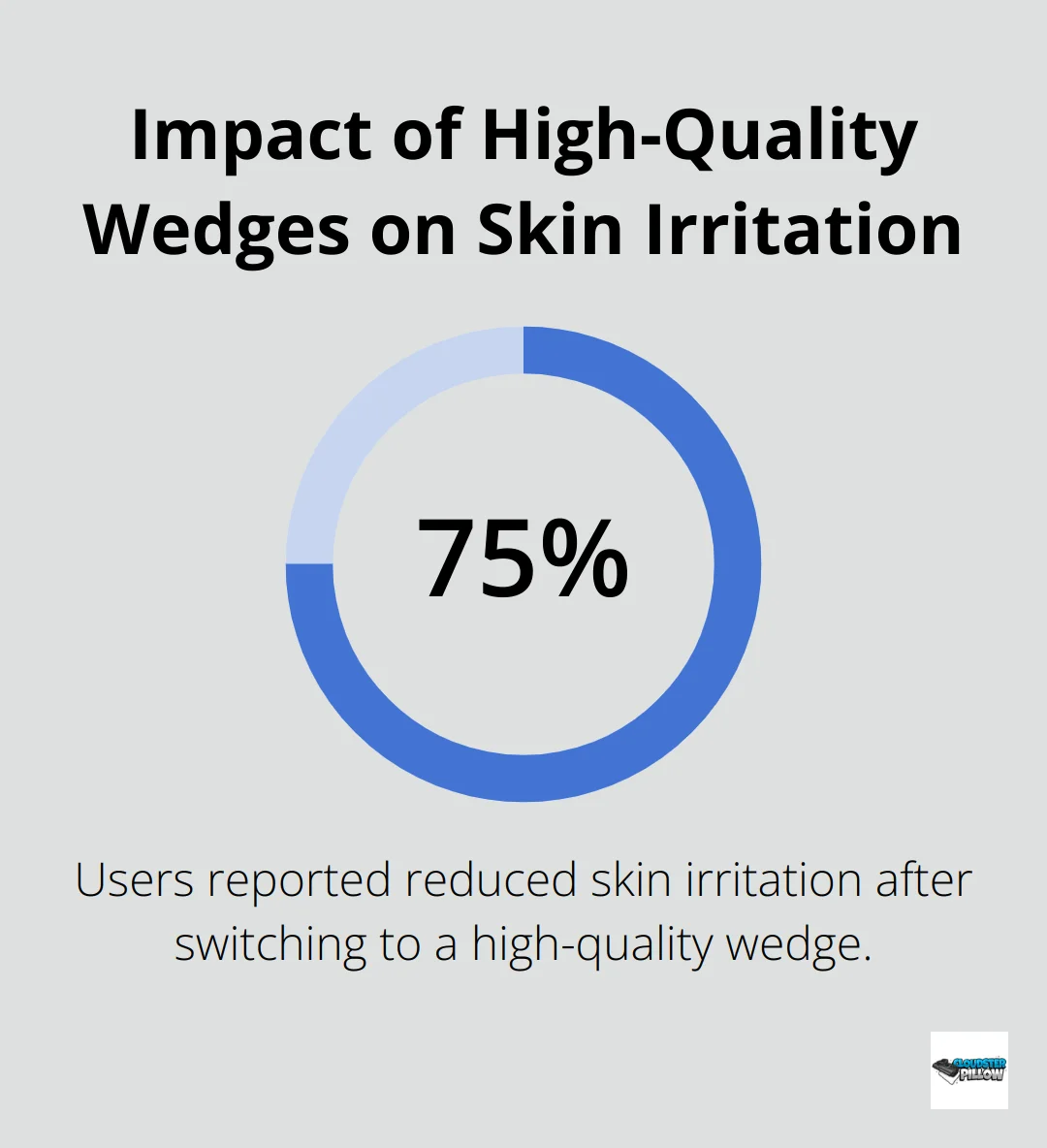
Types of Wedges Available
Wedges come in various forms, from DIY solutions to purpose-built products. Options include:
- Foam wedges: Popular for their lightweight nature and ability to conform to body contours.
- Kydex wedges: Offer durability and a sleek profile.
- Gel-based wedges (like the Cloudster Pillow): Provide a balance of comfort and longevity.
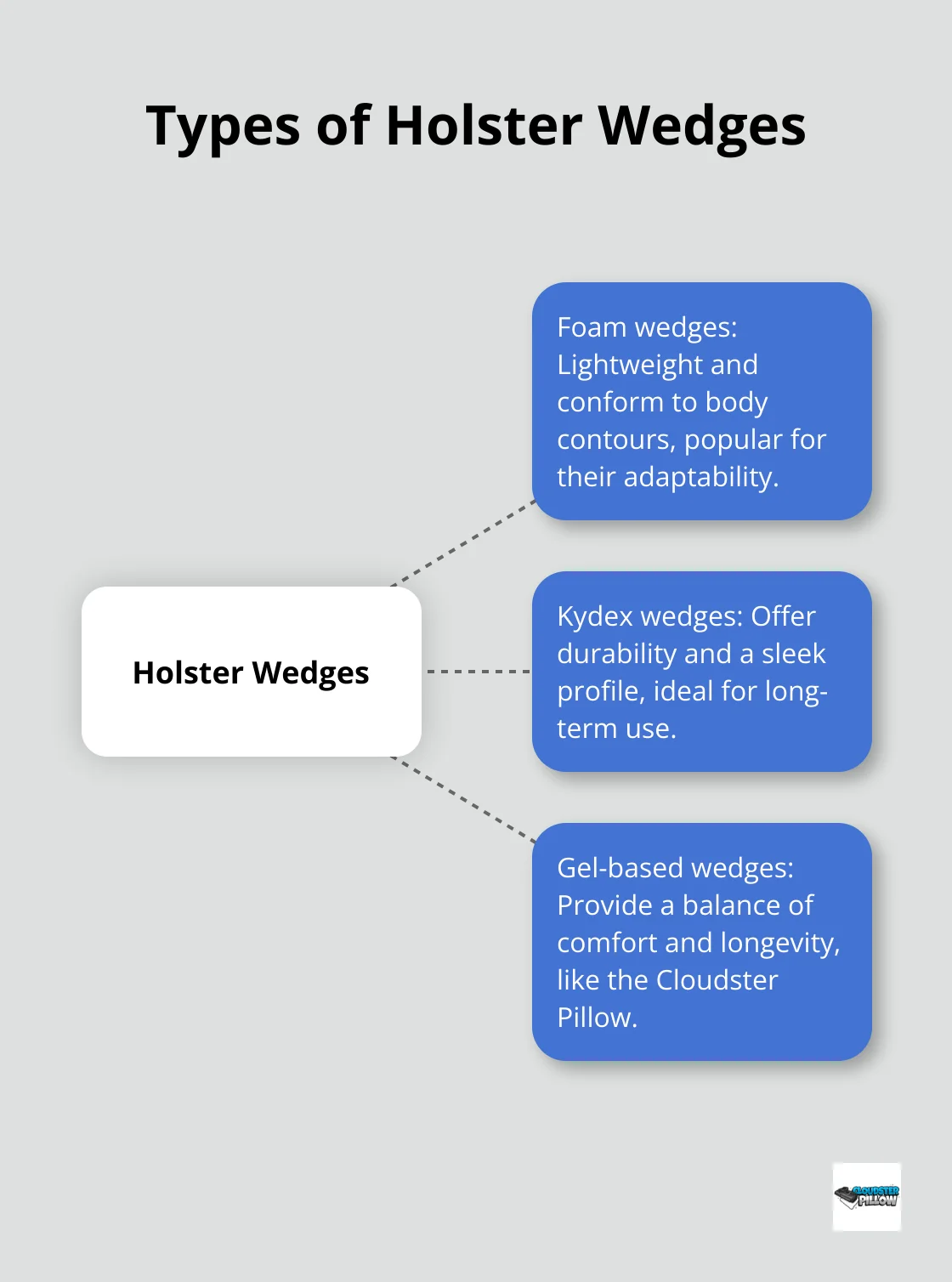
DIY enthusiasts often create the appendix carry wedge using materials like foam yoga blocks or shoe inserts. While cost-effective, these solutions may lack the durability and precise design of purpose-built options. Professional wedges are engineered specifically for AIWB carry, offering consistent performance and often featuring moisture-wicking properties to enhance comfort during extended wear.
Choosing the Right Appendix Carry Wedge
When selecting an appendix carry wedge, consider your body type, firearm size, and typical daily activities. Larger individuals might benefit from a more pronounced wedge, while those with a slimmer build may prefer a subtler option.
For those carrying full-size pistols, a larger wedge can help distribute weight more effectively. Compact or subcompact firearm users might find a smaller wedge sufficient for their needs.
Your daily routine also plays a role in wedge selection. If you spend long hours sitting, a softer, more pliable wedge might provide better comfort. For active lifestyles involving frequent movement, a firmer wedge could offer more stable positioning.
The appendix carry wedge technique has revolutionized appendix carry for many CCW practitioners. It addresses common issues of printing and discomfort, making AIWB a viable option for a broader range of body types and lifestyles. As we move forward, we’ll explore how to implement this technique effectively to maximize your comfort and concealment. Regular practice of draw and re-holstering techniques with your chosen holster ensures quick and safe access to your firearm when needed.
Mastering Appendix Carry Wedge Placement
Assessing Your Needs
The appendix carry wedge technique requires careful consideration of your body type, holster, and firearm. The right placement will improve both comfort and concealment dramatically.
Start by evaluating your body shape and typical carry position. A thicker wedge might be necessary for individuals with a larger midsection to create adequate tilt. A thinner wedge often suffices for slimmer builds. (Some wedges offer adjustable thickness, allowing you to fine-tune to your specific needs.)
When you select a wedge, factor in your firearm size. Full-size pistols typically require more substantial wedges to manage their weight and size effectively. Compact and subcompact firearms might work well with smaller wedges.
Optimal Positioning Techniques
For appendix carry, place the appendix carry wedge between the holster and your body, ensuring the thicker end is at the bottom (toward the muzzle). This placement creates a slight outward tilt of the muzzle, pushing the grip closer to your torso. Try different positions – moving it slightly up or down can make a significant difference in comfort and concealment.
For strong-side carry, position the wedge behind the main body of the holster. This helps distribute pressure more evenly and can reduce printing of the grip.
Fine-Tuning for Effectiveness
After you find a general position that works, make small adjustments throughout the day. Focus on how the wedge feels during different activities – sitting, standing, bending, and walking. You might discover that slight shifts in placement can dramatically improve comfort during specific movements.
Don’t hesitate to trim or shape your wedge for a custom fit. Many users report success in cutting wedges at slight angles to better match their body contours. (However, some wedges are designed to eliminate the need for custom shaping.)
Addressing Common Challenges
If you experience discomfort or printing issues, try these solutions:
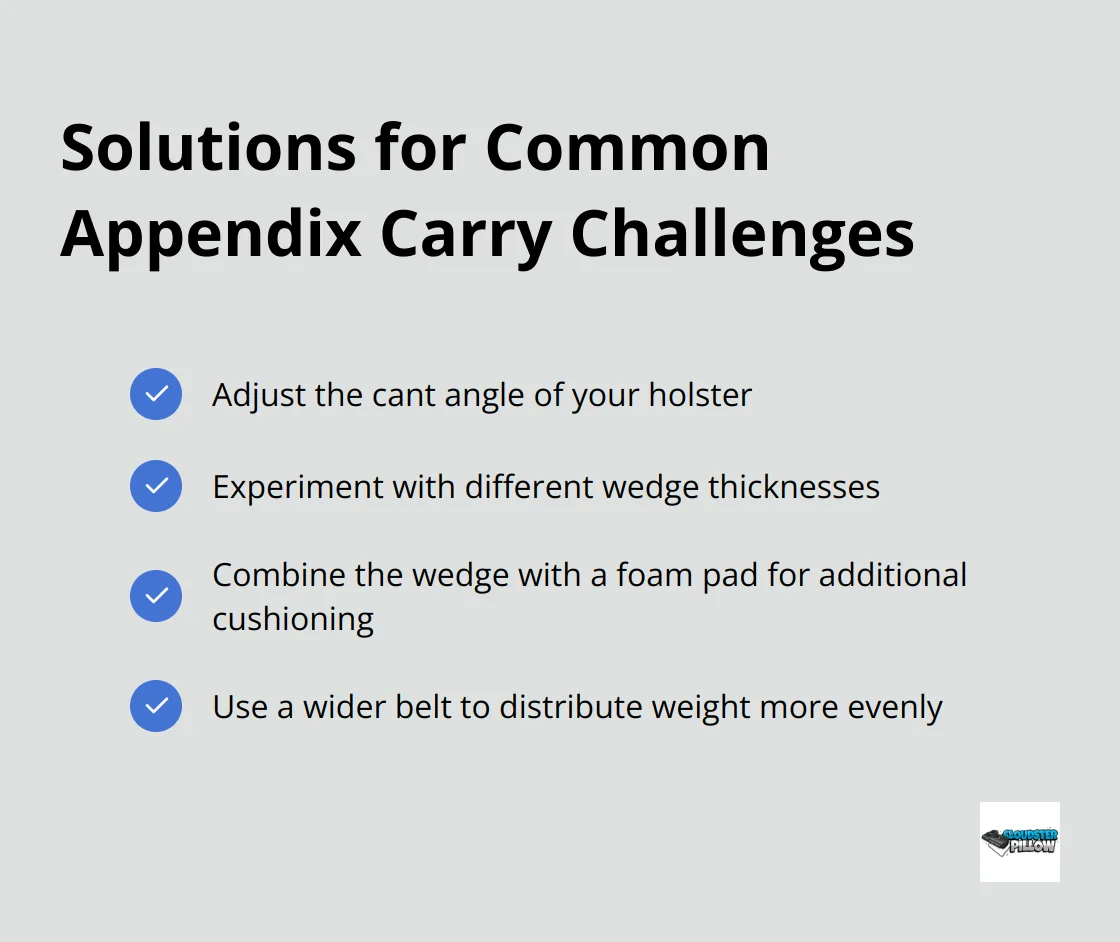
Maintaining Your Setup
Regularly inspect your wedge for signs of wear or compression. Replace it as needed to maintain optimal performance. Clean your wedge periodically, following the manufacturer’s instructions, to prevent odor buildup and maintain its shape.
FAQs
1. What is appendix carry, and why is it popular for concealed carry?
Appendix carry (AIWB) involves carrying a firearm in the front of the body, typically between 12 and 2 o’clock. This position offers fast access and excellent concealment, making it ideal for those who prioritize a quick draw while maintaining a discreet profile.
2. How does an appendix carry wedge improve comfort and concealment?
The appendix carry wedge helps tilt the grip of the firearm closer to the body, reducing printing and discomfort. By angling the firearm slightly, it redistributes pressure more evenly, alleviating the common issue of the muzzle digging into the thigh, especially while sitting.
3. What types of appendix carry wedges are available?
There are several types of appendix carry wedges:
-
Foam wedges: Lightweight and moldable to body contours.
-
Kydex wedges: Durable and sleek, ideal for minimal bulk.
-
Gel-based wedges: Offer a balance of comfort and longevity, like the Cloudster Pillow, which provides cooling gel memory foam for extended wear.
4. How do I choose the right appendix carry wedge for my body type and firearm?
The best wedge for you depends on your body size, the firearm you carry, and your daily activities. Larger individuals or those carrying full-size pistols may need a larger wedge to manage weight and improve concealment. For slimmer individuals or those with smaller firearms, a smaller wedge might suffice. Consider your daily routine for the right balance of comfort and stability.
5. How should I position my appendix carry wedge for maximum comfort and concealment?
Position the wedge between your holster and body, with the thicker end facing the bottom (towards the muzzle). This creates an outward tilt, bringing the firearm’s grip closer to your body. Adjust the wedge’s position based on your comfort throughout the day and experiment with small shifts to optimize concealment and comfort.
Final Thoughts
The appendix carry wedge technique revolutionizes concealed carry for many CCW practitioners. This simple modification enhances comfort and concealment, addressing common challenges associated with appendix carry. It reduces printing, improves weight distribution, and creates a more comfortable everyday carry experience.
We encourage you to experiment with different wedge options and placements. Your optimal configuration depends on your body type, firearm, and daily activities. Consistent practice and training remain essential to build muscle memory and confidence with your setup.
For a versatile and comfortable solution, we recommend the Cloudster Pillow for appendix carry. This innovative accessory offers adjustable shredded cooling gel memory foam, providing a customizable fit that enhances both comfort and concealment (for various firearms and body types).

